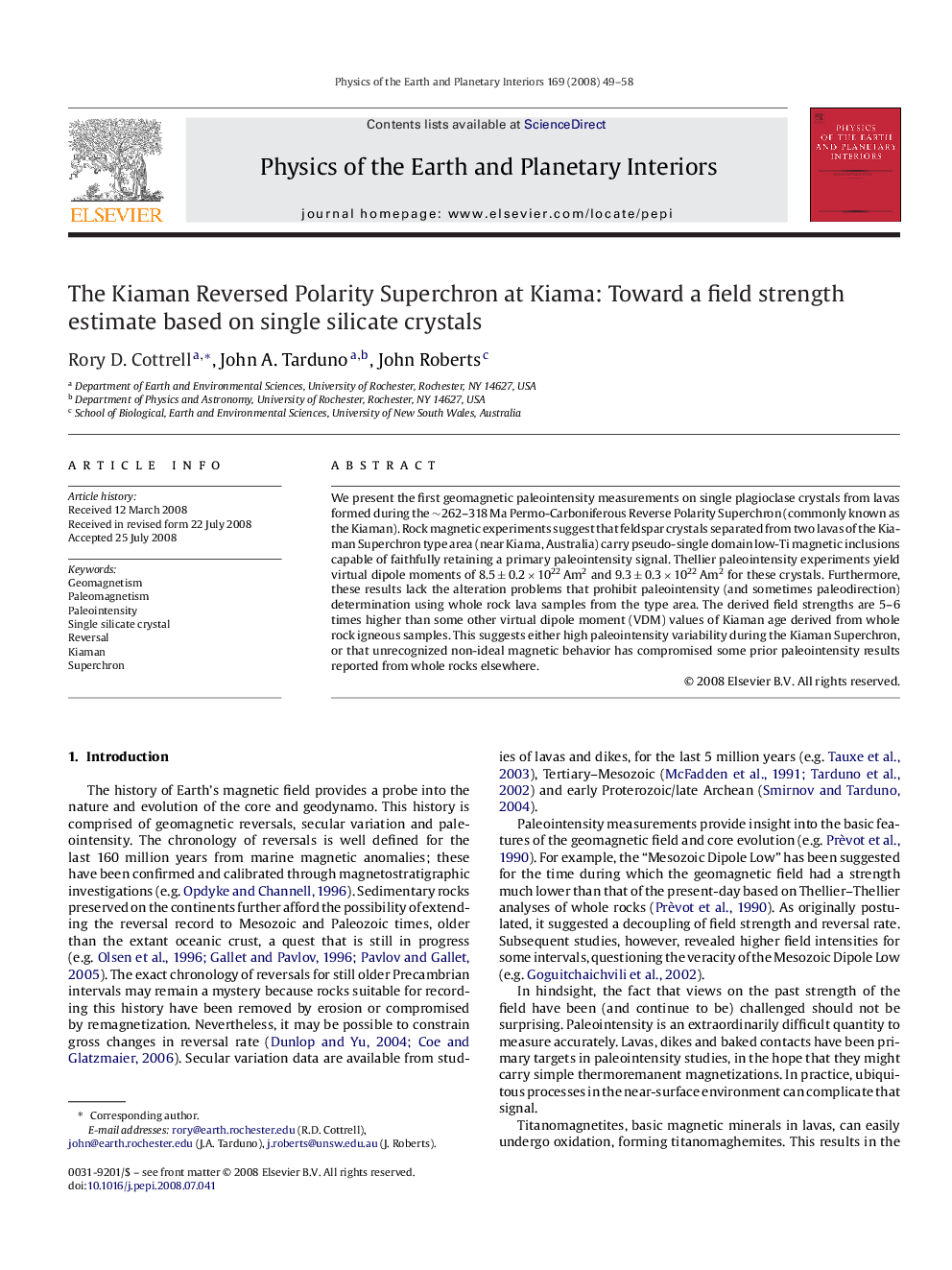| Article ID | Journal | Published Year | Pages | File Type |
|---|---|---|---|---|
| 4742631 | Physics of the Earth and Planetary Interiors | 2008 | 10 Pages |
We present the first geomagnetic paleointensity measurements on single plagioclase crystals from lavas formed during the ∼262–318 Ma Permo-Carboniferous Reverse Polarity Superchron (commonly known as the Kiaman). Rock magnetic experiments suggest that feldspar crystals separated from two lavas of the Kiaman Superchron type area (near Kiama, Australia) carry pseudo-single domain low-Ti magnetic inclusions capable of faithfully retaining a primary paleointensity signal. Thellier paleointensity experiments yield virtual dipole moments of 8.5 ± 0.2 × 1022 Am2 and 9.3 ± 0.3 × 1022 Am2 for these crystals. Furthermore, these results lack the alteration problems that prohibit paleointensity (and sometimes paleodirection) determination using whole rock lava samples from the type area. The derived field strengths are 5–6 times higher than some other virtual dipole moment (VDM) values of Kiaman age derived from whole rock igneous samples. This suggests either high paleointensity variability during the Kiaman Superchron, or that unrecognized non-ideal magnetic behavior has compromised some prior paleointensity results reported from whole rocks elsewhere.
